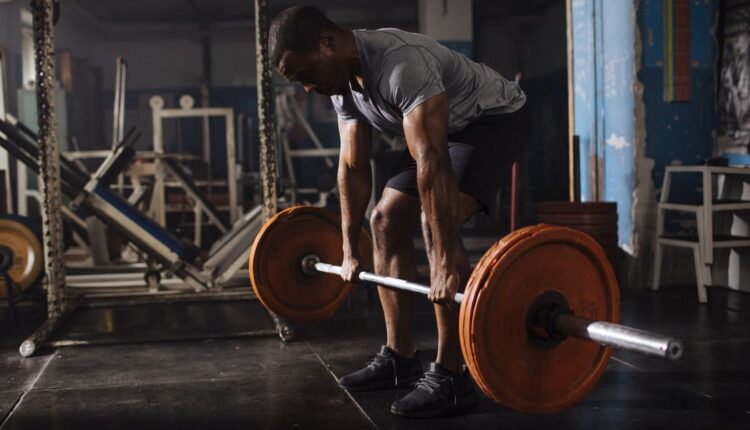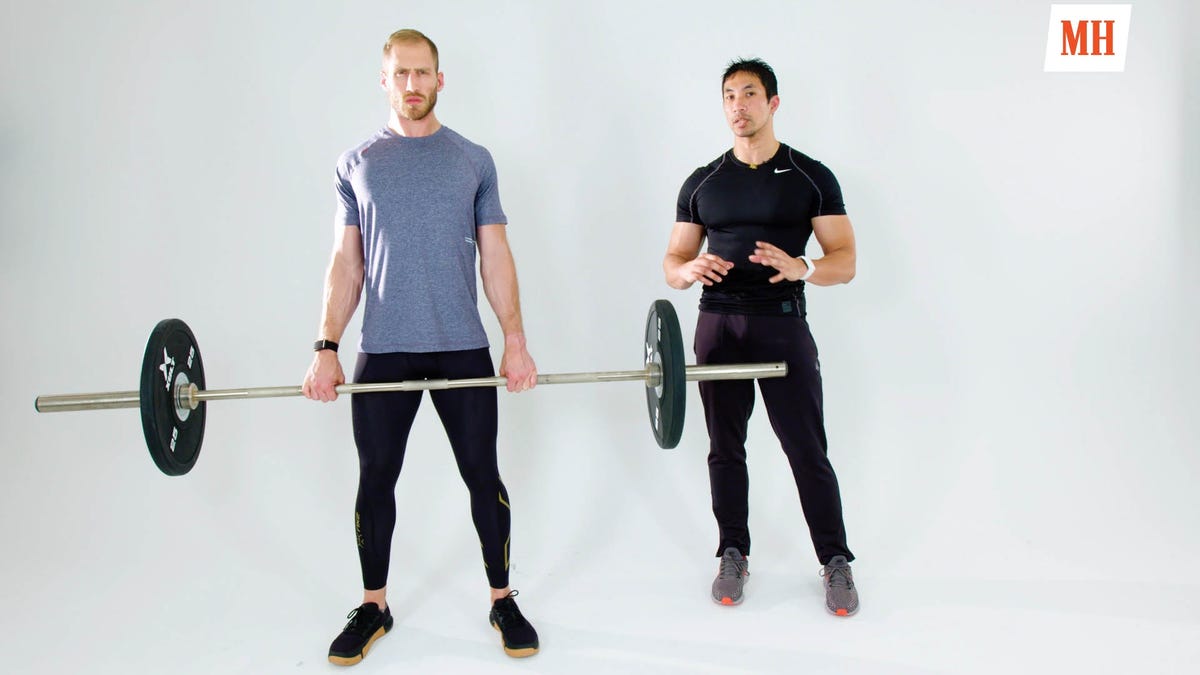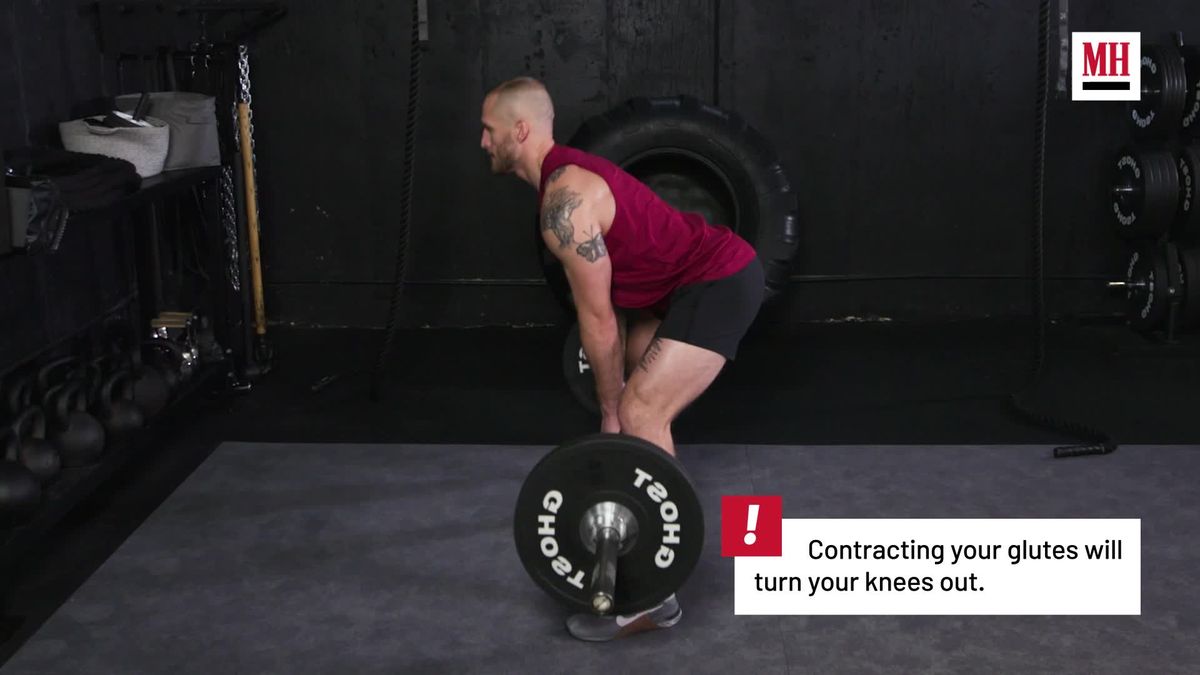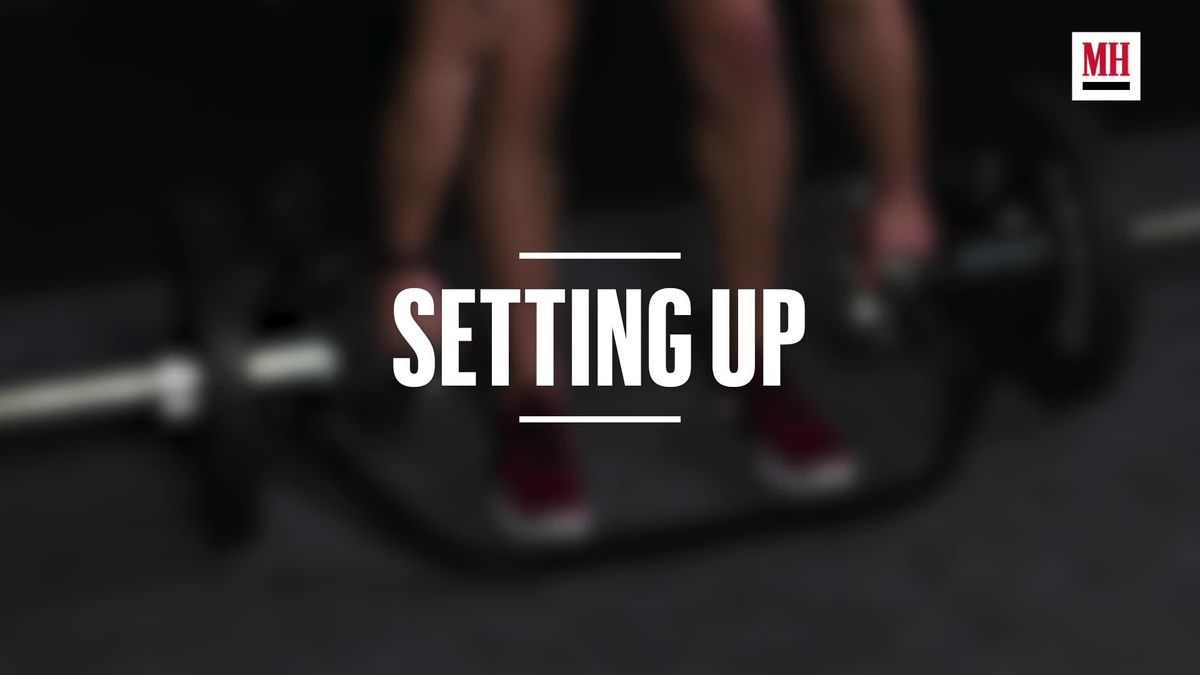EVEN IF YOU’VE never stepped foot into a gym in your life, you’ve likely performed a deadlift (or at least the key movements behind the classic compound exercise). If you’ve ever hinged over to pick your child or dog up off the ground, reached low to grab some grocery bags, or bent down to pull something out of a low cabinet—you’ve dipped your toe into the deadlifting waters.
Deadlifts have some of the greatest functional carryover of all the standard lifts. The mechanics and strength that’s built with deadlifting “carries over into our day to day lives of picking stuff up off the ground and being able to do so in a way that’s efficient and in a way that’s safe,” says Kurt Ellis, C.S.C.S., owner and coach at Beyond Numbers Performance.
“Efficient” is the key word here. Not only does deadlifting make our movement patterns more efficient, but programming deadlifts into our workouts is efficient in itself, since the exercise involves training so many different muscles all at once. This movement “work(s) almost every muscle in the body,” says Faris Khan, C.S.C.S. From your hamstrings to your core and even your forearms, “pretty much everything is working.”
Since you’re working with so many muscles in concert to pull off a good rep, you can pull some pretty seriously weight, too. Here are seven of the main movers of a deadlift.
What Muscles Deadlifts Work
Glutes
The glutes are the muscles that make up your backside and butt. They’re one of the main movers in a deadlift since they’re “responsible for the extension—that’s what’s going to really drive that powerful pull within the lift,” Khan says.
Hamstrings
The hamstrings make up the back of the thigh, and work closely with the glutes to extend the hip through the deadlifting motion. You’ll feel them stretch out as you lower the weight to the ground.
Spinal Erectors
You may have heard the cue ‘keep your back straight’ when deadlifting. The spinal erectors do just that—they tighten to keep the spine neutral when the weight wants to curve it forward, “keeping you in alignment during the entire lift,” Khan says. Maintaining a straight back ensures the tension is centered on the glutes and hamstrings rather than the low back.
Core/Ab Muscles
“The entire core is working from the moment the bar comes off the floor, until the moment you put it back down,” in a deadlift, Khan says. Like the spinal erectors, the muscles of your core (we’re referring in this case to the rectus abdominis, transverse abdominis, and obliques, which people commonly think of as your abs) help stabilize the spine.
Lats
Some people consider the deadlift a secondary back exercise because of its major recruitment of the spinal extensors and the latissimus dorsi. Simply known as the “lats”, this is the largest muscle in your back. In a deadlift, it’s responsible for stabilizing the spine and maintaining that extended upright posture, Ellis says. Engaging your lats also helps to keep the weight close to the body.
Traps
The traps are a big back muscle that sits around your upper back and neck. You might not expect this to be an important muscle for performing a deadlift, but they actually help stabilize the shoulders as you move, Khan says.
Forearms
The mighty forearm muscles are important to help you to grip whatever bar, dumbbell, or kettlebell you may be using as a load for the deadlift. You might reach for grip aids like straps to help you to hold on as you progress to heavier weights, but if building muscle is your goal, stick with a standard pronated (overhand) grip for as long as possible.
Benefits of Deadlifts
Effective Training
As evident by the long list of muscles above, the deadlift recruits many different muscles at once. It’s a gold standard compound, or multi-joint, lift. You’ll train several muscles at once, maximizing your time in the gym. Plus, you’ll be able to load up heavy weight given the amount of muscle recruitment, which will help build strength.
Posterior Chain Strength
The posterior chain is the group of muscles that make up the back portion of you. It’s responsible for posture, spinal alignment, core protection, and basic strength. “I like to think of [the posterior chain] as the workforce for a lot of performance in general,” says Ellis.
Train Functional Movement
The deadlift emulates a movement that we do almost everyday—picking things up off the ground or a low surface. Even if you’ve never step foot on a lifting platform before, if you’ve ever hinged to grab something from the floor, you’ve completed a deadlift (but maybe not a safe one). Training deadlifts helps us build strength and proper biomechanics with hip hinging so that we can safely pick up things situated down low.
How to Deadlift the Right Way
The more muscles involved, the more complicated the lift—which makes the deadlift a bit perplexing if you don’t know what you’re doing. That also means it can also quickly cause injury if done incorrectly. Follow along here to ensure you’re deadlifting stays perfect.
How to Do It:
- Step up to the barbell with your feet directly below it.
- Drop the hips to grab onto the barbell. When you do, make sure the hips stay below the shoulders and the back stays flat.
- Before lifting the weight off the ground, squeeze your shoulder blades together like you’re trying to hold a pencil between them. To help do this, take the slack out of the bar by pulling it slightly.
- Inhale deeply and brace the core right before lifting. As you do, make sure your hips and knees extend at the same time.
- Lift up to a standing position where the hips are stacked directly underneath the shoulders.
- Control the weight as you release it back to the floor.
Deadlift Variations
Changing up the style of your deadlifts is important to keep your fitness well-rounded, Khan says. Variations allow you to emphasize different aspects of the exercise. For example, you get to home in on the adductor muscles when doing a sumo squat, or hit the hamstrings extra hard when doing Romanian deadlifts.
Incorporating variations will also simply help avoid “stagnation and redundancy, basically just doing the same thing over and over again,” says Ellis. Here’s a few variations to try on your next deadlift day.
Romanian Deadlift
If you’re looking to put a little more pressure on the posterior chain, try out the Romanian deadlift, or RDL. This variation reverses the conventional deadlift—the movement begins in the standing position, which is where the conventional version finishes.
How to Do It:
- Pick up the barbell using the conventional deadlift form (see above for cues).
- Once you’re in the standing position, ensure the feet are shoulder width apart and the shoulder blades are rolled back and down. Keep a slight bend in the knees while standing in that position.
- Slowly lower the bar by pushing the butt back and gliding the bar right along the thighs. Keep your neck inline with your spine by looking at a point on the floor a few feet in front of you.
- Lower until you feel tension in your hamstrings. Pause for a second at the bottom before squeezing the glutes to return to standing.
- Finish with the hips directly underneath the shoulders.
Sumo Deadlift
If you’re especially tall, you may take a liking to the sumo deadlift over the conventional version of the exercise. This style widens the stance and brings the legs outside of the hands when they’re placed on the bar. That means you’ll be moving through a shorter range of motion, so you will probably be able to move heavier weight once your master the lift.
How to Do It:
- Widen your feet as much as possible with the shins still staying perpendicular to the floor when gripping the bar. Step up to the bar so it’s right up next to the shins.
- Push the butt back as you hinge down, squeezing your glutes at the bottom to open up the knees.
- Just as in the conventional deadlift, squeeze your shoulder blades together. To help do this, turn the pits of your elbows forward. Make sure the hips stay below the shoulders and the back stays flat.
- Inhale deeply and brace the core right before lifting. As you do, make sure your hips and knees extend at the same time.
- Lift up to a standing position where the hips are stacked directly underneath the shoulders. Control the weight as you release it back to the floor.
Trap Bar Deadlift
Utilizing a trap bar for your deadlifts allows for a more natural lift. In a trap bar, the weight is at your sides, so it’s a better emulation of the ways you’re probably picking something up in real life.
How to Do It:
- Step inside the trap bar, aligning your shins with the center of the bar. Push your butt back to lower your torso to grip the bar.
- Like the conventional deadlift, squeeze your shoulder blades together. To help do this, turn the pits of your elbows forward. Make sure the hips stay below the shoulders and the back stays flat.
- Inhale deeply and brace the core right before lifting. As you do, make sure your hips and knees extend at the same time.
- Lift up to a standing position where the hips are stacked directly underneath the shoulders. Control the weight as you release it back to the floor.
Single-Leg Deadlift
“If you think about our day to day life, a lot of it is spent on a single leg,” Ellis says. “When we look at gait mechanics, really everything is a single-leg dynamic.”
Unilateral training is especially great for training balance and fixing strength discrepancies. An extra challenge will be placed on your core, as your body fights to keep the torso level against the imbalance from one side to another.
How to Do It:
- Grab your weights. In the standing position, gather yourself as you would for a conventional deadlift: squeeze the shoulder blades down and back, keep a slight bend in the knee, and brace your abs.
- When you feel ready, shift one leg slightly behind you.
- Once you’re balanced, push your butt back without letting the back foot touch the floor. Maintain the rigidity in your core.
- Lower the weights to where you feel a stretch through your hamstrings. Keep the weights close into the body.
- Squeeze your glutes to return to standing, finishing to where the hips are just below the shoulders.
Cori Ritchey, NASM-CPT is an Associate Health & Fitness Editor at Men’s Health and a certified personal trainer and group fitness instructor. You can find more of her work in HealthCentral, Livestrong, Self, and others.
Brett Williams, a fitness editor at Men’s Health, is a NASM-CPT certified trainer and former pro football player and tech reporter who splits his workout time between strength and conditioning training, martial arts, and running. You can find his work elsewhere at Mashable, Thrillist, and other outlets.






Comments are closed.